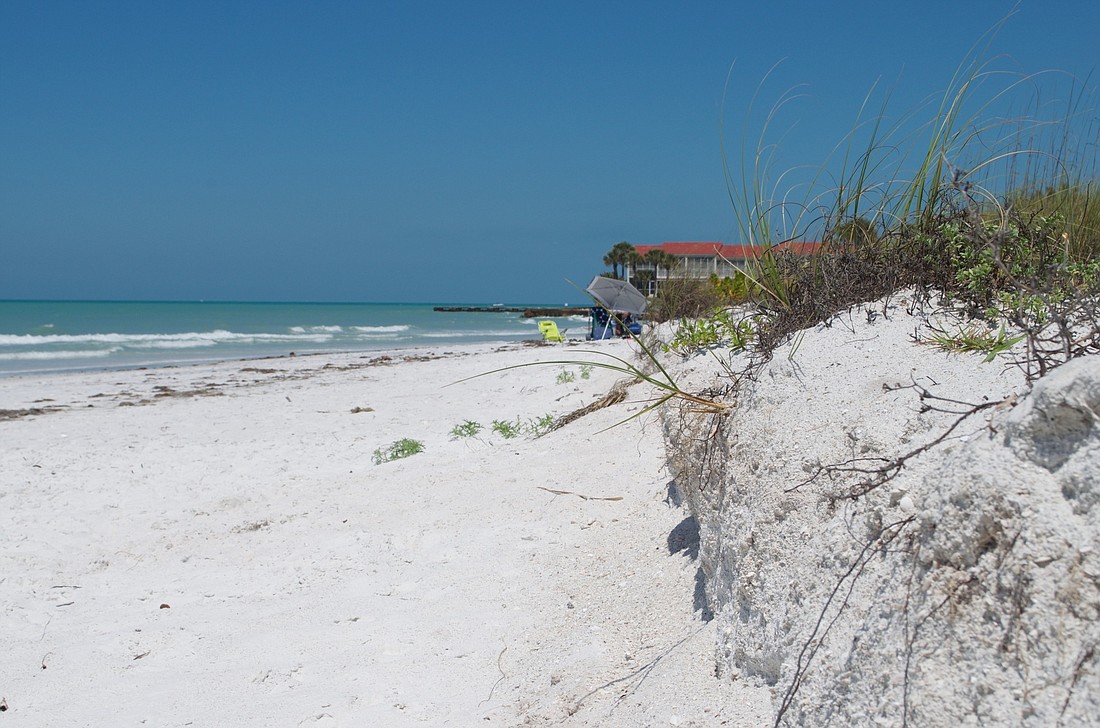- April 26, 2024
-
-
Loading

Loading

Beaches.
Fixing them, maintaining them and paying for it all years into the future will likely be topics of conversation, study and — possibly — an election in early 2020 as the town advances toward a new shoreline management plan.
The first slice appears in the town’s budget proposals for fiscal year 2020 in the form of three options for the 2020-2024 beach capital fund.
In all three options, rolled out to the Town Commission and the public last week, a referendum is required. And in all three, as presented, homeowners would see higher beach-fund tax bills if only because interest rates are higher than in 2016, when the town paid 1.79% to borrow $10,720,908.
The final payment on that loan comes in fiscal year 2020, which is why the town is embarking on a new set of options.
Town leaders are recommending the commission consider for the ballot a middle-of-the-road package costing a total of $42 million. The timeline requires approval of language by commissioners no later than December for the March ballot.
“Our beaches are one of our most, if not our most, valued asset for the protection of property values on the Key,’’ said Public Works Director Isaac Brownman, adding that the town’s quality of life and tourism are also directly linked to the quality of the town’s beaches.
The most basic option would cost $32 million and would essentially maintain a steady state on the shoreline. It eliminates the proposal to build five permeable groins on the north end in favor of truck-dumped sand every two years, as was done last fall, and continues with plans to dredge the 1A Canal at Greer Island. Its impact on taxes is the softest: a $33.40 annual increase for owners of District A property with a benchmark taxable value of $500,000. In District B, the increase would be $8.40.
The plan lets “nature do whatever it’s going to do to Greer Island and to the south,” Brownman said. “It doesn’t substantially protect the area, but looking at the cost of the full project, you always look at a no-build or an as-is situation to compare that to.”
The so-called full project, at $52 million with a larger impact on taxes over seven or eight years, includes the groins, the trucked-in sand to backfill them, and other projects around the island.
Under the full project, District A owners of property with $500,000 taxable value would see tax increases of $485.75 annually; District B owners would see an increase of $121.45 annually.
That’s why town officials are recommending consideration of the middle, or hybrid, option.
The central difference is a plan to combine Longboat Key’s next turn at dredging Longboat Pass with construction of the five north end groins, which eliminates millions spent on sand to fill the groins and the need for periodic truck-dump projects.
“Our hope, and our goal is there’d be a lot more pass dredge and a lot less truck haul,” Brownman said. “It’s about the cheapest sand we can get because it’s right there, it’s right next to us. The dredge just goes out and pumps it right out on to our beach.”
One component of all three options is a matching payment of $1.5 million to the U.S. Army Corps of Engineers to launch a federal study of a partnership.
The Corps dredged Longboat Pass in the 1980s and pumped the sand to the north end. Town Manager Tom Harmer said it’s possible, with a new look at public access points, the federal agency’s reimbursement levels for beach projects could rise from percentages in the teens to the mid-20s.
“That’s our most erosional part of the island, so if we’re going to do anything with the Army Corps, that probably would be a good place to look at,’’ Harmer said.
Town consultants are working on a shoreline comprehensive plan, which commissioners will likely see in September or October. From there, consideration on the options to pursue for the ballot will follow.
“From big things going on in town, undergrounding is a big thing, but the good thing is we’ll be in construction mode in the next few months,’’ Harmer said. “So my sense is that over the next few months, we need to kick up the public discussion of beach nourishment.’’